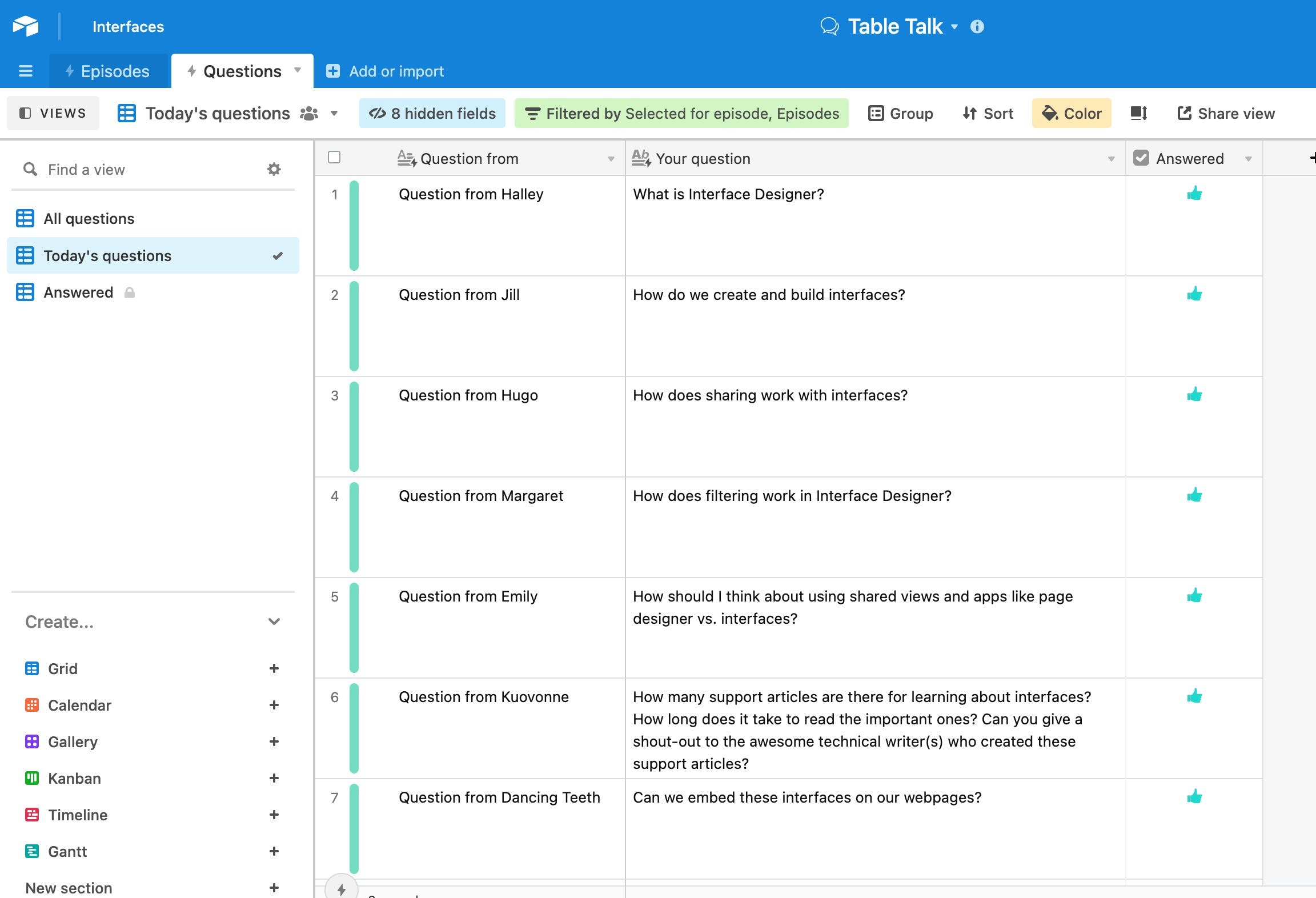I create a lot of content. More precisely, I stream a lot. You can find over 70 streams on aatt.io. Late 2021, as part of my role at Airtable, I launched Table Talks, a weekly livestream answering user's frequent questions about Airtable.
I've learned over the last 3 years of streaming. Main takeaway is that it's in fact a terrible medium for learners. Most folks (me included) don't want to sit through an hour long stream for a quick answer.
So I set out to create a workflow to repurpose hour long streams into 5-7 minute short videos where viewers can get the information they need and nothing more. To say I've been obsessed with repurposing over the last 3 years would be an understatement.
From the 15 table talks, we created over 80+ clips for a total of 4 hours of repurposed content. You can see an example of a repurposed clip here.
Here's how we did it:
Step 1: Create your content with repurposing in mind
When we created Table Talks, repurposing the content was one of our main objectives. Therefore, we formatted it in a way that would make it easy to identify the clips to repurpose. Each Table Talk was a series of questions. And each question was an opportunity for a short clip!
To make it easy for the editor (Colleen!) to identify the moments to repurpose, all questions we were going to answer were in Airtable. We also used the base itself as the agenda for the stream (how meta!).

Even if your stream isn't about Airtable—you can add your agenda into an Airtable base to start planning what your cuts should be.
Step 2: Identify and track status of clips to create
For each Table Talk, we wanted to create two types of clips and track the status of every clip. The first was a 10 minute cutdown of the stream (like this 10 minute explainer of formulas) that went to the stream's essentials. The other was editing each question as its stand alone video (like this video on the Primary field). We used Airtable sync to bring every episode and question into a base. Then a new table (clips) to track the status of each clip, what question it's related to and the type of clip we wanted to create.

After each episode, I'd identify which clips we wanted to create noting it as ready for editing when all meta data was filled out.
Step 3: Edit with Descript
Clips had to be succinct. We needed a quick way to remove the stutters, mentions of chat and everything else that's normal in a stream but feels weird when watching afterwards (especially outside of YouTube)!
So we used Descript. Descript turns anyone into a video editor. Instead of editing time, it lets you edit text which is much more natural. It auto transcribes your content and then you simply remove the text you don't want to appear ("any questions in the chat" for instance) and it does the editing for you. It even removes stutters and umms inherent to live broadcasts.
Inserting a small learning here: it's almost impossible to find someone who understands the content AND is a good editor (you either have one or the other). Descript lets you turn any expert into a content creator! Luckily, we had Colleen on hand to help us here. Hire her!
Step 4: Add meta data and upload to your video hosting
Once each video was cut down, it was time to upload them to our CMS (Wistia in our case). So we needed to add a title, thumbnail etc. I'm allergic to copy pasting (or doing most tedious work to be honest) so I batched these into one sitting by creating a view with the fields I needed to fill out.
To ensure data consistency and (more importantly) not have to copy paste a bunch of information, I wrote a short script to upload to Wistia.

If you're interested in learning how to write the script to auto create the thumbnails and auto upload to a CMS, check out this series on content automation in Code Meets No-Code. The series was actually inspired by this workflow. I repurposed the repurposing workflow into a video series for Code Meets No-Code. That's how serious I am about repurposing.
This workflow isn't the flashiest, it's simply taking an hour long stream and cutting into 5 minute sections. All behind the scenes. But it's probably one of the workflows I'm most proud of. The results speak for themselves: the repurposed content gets more play than the original streams!
The beauty of this workflow is that it it allows me to create content in the format I prefer while delivering it in the format that learners prefer. A real win win!
That’s it for this week!
Until next week, keep building!
Aron






